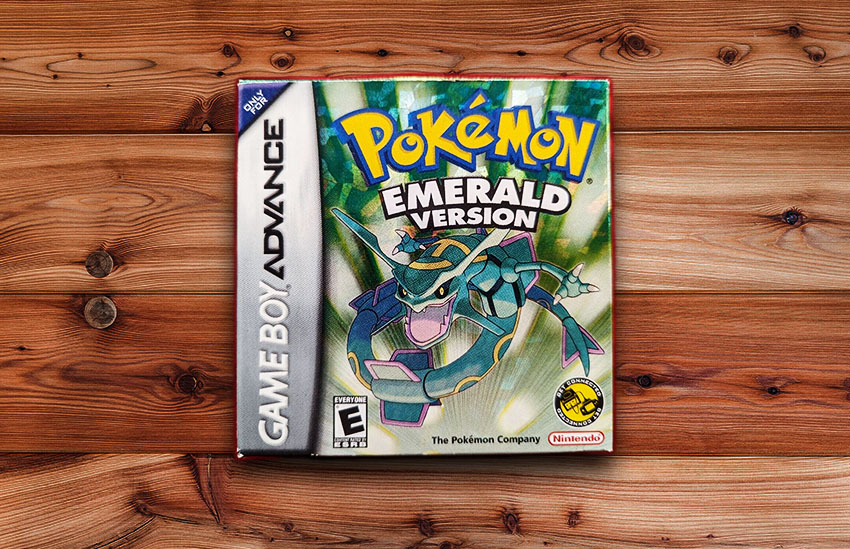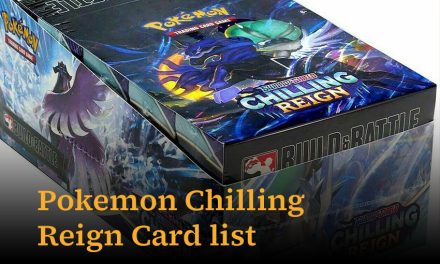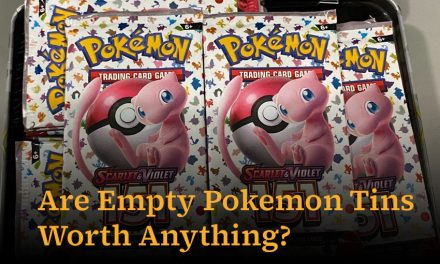In the enchanting realm of Pokémon, where trainers embark on epic journeys, battle fierce creatures, and strive to become champions, one game has consistently stood out as an elusive gem: Pokémon Emerald. This beloved installment in the Pokémon franchise, released over a decade ago, continues to captivate the hearts of both veteran and novice trainers.
However, what truly sets Pokémon Emerald apart is not just its captivating storyline or memorable Pokémon; it’s the astonishing price tag it commands in the gaming market. In this article, we unearth the mystery Why is Pokemon Emerald so expensive? and answer the all-important question, “How much does Pokemon Emerald Cost?” and last but not the least How Many Pokémon Emeralds were Made?
To the uninitiated, the idea of an old handheld game commanding prices that rival modern console titles might seem perplexing. After all, Pokémon Emerald was initially released for the Game Boy Advance back in 2004, at a time when handheld gaming was still in its infancy.
So, why does this aging masterpiece fetch such exorbitant sums today? What factors have contributed to its surging price, and how much did Pokemon Emerald cost when it came out? In this article, we will delve into the mystique of Pokémon Emerald, uncovering the reasons behind its enduring popularity and the astronomical prices collectors are willing to pay to experience its magic.
A Brief History of Pokémon Emerald
Pokémon Emerald, the third installment in the highly acclaimed third-generation Pokémon series, made its grand debut in Japan in 2004. Developed by Game Freak and published by Nintendo and The Pokémon Company, this Game Boy Advance title quickly became a must-have for fans of the franchise. It was the culmination of the Ruby and Sapphire versions, offering a unique twist on the familiar narrative.
Set in the Hoenn region, Pokémon Emerald introduced a captivating storyline revolving around Team Aqua and Team Magma, who sought to manipulate legendary Pokémon to achieve their respective goals of expanding the seas or landmasses. Players embarked on an epic adventure as a budding Pokémon Trainer, aiming to thwart these villainous teams while striving to become the Hoenn region’s Pokémon Champion.
One of the standout features that distinguished Pokémon Emerald from its predecessors was the inclusion of the Battle Frontier, a facility where trainers could test their skills in various challenging battle formats. This addition significantly extended the game’s longevity, keeping players engaged long after they had defeated the Elite Four and become the Champion.
Moreover, Pokémon Emerald introduced the Battle Frontier, a facility that offered a variety of challenging battle formats, adding depth and replayability to the game. Additionally, the game featured compatibility with the Game Boy Advance Wireless Adapter, allowing players to engage in battles and trades without the need for a link cable.
Upon its initial release, Pokémon Emerald received widespread acclaim from both critics and fans. Its captivating storyline, improved gameplay mechanics, and the Battle Frontier’s inclusion were lauded as significant enhancements over its predecessors.
It solidified its place as one of the standout titles in the Pokémon franchise, achieving commercial success and earning a devoted following. GameSpot quoted:
“Pokémon Emerald will feel especially familiar, and as such, it will likely hold greater appeal to the uninitiated or those who have been on Pokémon hiatus.” ~GameSpot
Little did anyone know that Pokémon Emerald’s journey was far from over. As the years rolled on, this game would achieve a status that few could have predicted, transcending its original release and becoming a highly sought-after collector’s item, fetching staggering prices in the gaming market.
But what precisely transformed this beloved classic into a cherished relic, and why does it command such a premium today?
Why is Pokemon Emerald So Expensive? – Price Tag: A Product of High Demand and Limited Supply
Perplexingly enough the answer to this question lies within another question, How Many Copies of Pokemon Emerald Were Made? It’s a well-known fact in the world of gaming that Pokémon titles have an uncanny ability to maintain their value over time, and Pokémon Emerald is no exception.
In the case of this particular game, its remarkable price surge can be attributed to a simple yet powerful principle: high demand coupled with limited supply. For more details on the concept, read our article on the Top 10 Most Expensive Pokemon Cards In The World.
Pokémon Emerald was, without a doubt, a fantastic game when it was first released. Yet, what’s fascinating is how it has continued to captivate the gaming community years after its initial debut.
Part of the reason for this enduring appeal can be attributed to the fact that the Nintendo 3DS received remakes of Ruby and Sapphire, two other beloved Pokémon titles from the same generation. While an official Emerald remake never saw the light of day, these remakes reignited the love for the Hoenn region and its Pokémon.
As a result, many Pokémon enthusiasts who might have passed on Pokémon Emerald in the past have now come to appreciate its unique charm and gameplay. The realization that they missed out on a gem has led to a surge in demand for the game. Collectors and nostalgic gamers alike are eager to revisit the Hoenn region and its captivating storyline.
However, the challenge lies in securing a copy of Pokémon Emerald today. The supply of original cartridges is minimal, especially ones in good condition.
As a result, those who wish to experience nostalgia or complete their Pokémon collection find themselves in a competitive and often costly pursuit.
In essence, Pokémon Emerald’s high price tag is a direct consequence of the perfect storm of factors: a game that has stood the test of time, newfound appreciation from a generation of gamers, and a scarcity of available copies.
This convergence of demand and rarity has transformed Pokémon Emerald into a cherished relic, commanding premium prices in the gaming market and solidifying its status as a highly sought-after piece of Pokémon history.
How Many Pokémon Emeralds were Made?
The exact number of Pokémon Emerald cartridges produced during its initial run is not publicly available, as Nintendo and Game Freak typically do not disclose specific production figures for their games.
However, it is widely understood that Pokémon games, especially main series titles like Emerald, received substantial production runs due to the immense popularity of the franchise.
During the height of the Game Boy Advance’s popularity in the mid-2000s, Pokémon games were highly anticipated and enjoyed significant commercial success.
As such, it can be reasonably assumed that a substantial number of Pokémon Emerald cartridges were manufactured to meet the demand of eager Pokémon trainers worldwide.
While the exact quantity remains a mystery, the game’s widespread availability during its release period suggests that it was not produced in extremely limited quantities.
Nevertheless, as time has passed and many of these original cartridges have been lost, damaged, or collected by enthusiasts, the supply of Pokémon Emerald in the secondhand market has naturally decreased. This scarcity, combined with the enduring demand for the game, has contributed to the rising prices associated with acquiring a copy of Pokémon Emerald today.
How much did Pokemon Emerald Cost when it first come out?
When Pokémon Emerald first hit store shelves in 2004, it was offered at the standard retail price for Game Boy Advance games, which was typically around $34.99 to $39.99 USD in the United States.
The pricing could vary slightly depending on the retailer and any promotional deals or bundles that might have been available at the time of purchase.
The game’s price at launch was reflective of the prevailing market rates for handheld video games during that era. Pokémon Emerald, as the enhanced and combined version of the previous titles Pokémon Ruby and Sapphire, offered players an expanded adventure, additional features, and the chance to capture both Team Aqua and Team Magma’s legendary Pokémon.
Its compelling gameplay and connection to the existing Pokémon universe made it a must-have title for fans of the series, justifying its initial price point.
Since then, Pokémon Emerald’s value has evolved significantly in the collector’s market due to its continued popularity, scarcity of pristine copies, and the allure of owning a piece of Pokémon history.
Today, the game often commands significantly higher prices among collectors and enthusiasts who appreciate its enduring appeal.
How to check if a Pokemon Emerald cartridge is real or not?
Verifying the authenticity of a Pokémon Emerald cartridge is essential, especially in a market where counterfeit and replica copies exist. Though you can never be 100% sure if one is real or not there are definitely checkpoints that you can check. Here are some steps you can take to determine if a Pokémon Emerald cartridge is genuine:
- Check the Label and Cartridge Design: Examine the label on the front of the cartridge closely. Genuine Pokémon Emerald cartridges will have a high-quality label with sharp, clear graphics. Be wary of labels that appear blurry, pixelated, or of low-quality printing. Additionally, authentic cartridges should have a Nintendo logo, a Game Boy Advance logo, and the Pokémon logo on the label. Ensure that these logos are present and correctly positioned.
- Inspect the Cartridge Shell: Genuine Pokémon Emerald cartridges are typically housed in a solid, well-constructed plastic shell. Counterfeit copies may have flimsy or poorly made shells that feel cheaper to the touch. Check for any rough edges, mismatched colors, or unusual seams on the cartridge shell, as these can be signs of a fake.
- Examine the Screws: Open the cartridge (if possible) and inspect the screws holding it together. Genuine Pokémon cartridges usually have tri-wing screws, which are difficult to open without a specialized screwdriver. Counterfeit cartridges may use standard Phillips head screws, so look for any irregularities in the screw design.
- Check for a Battery: Pokémon Emerald cartridges use a battery to maintain save data. Open the cartridge and look for a small battery. If the cartridge is genuine, it should have a battery. Counterfeit copies may omit this feature.
- Test the Gameplay: The most reliable way to confirm authenticity is to play the game. Genuine Pokémon Emerald cartridges will work as expected, allowing you to progress through the game without encountering significant glitches or errors. Counterfeit copies may have gameplay issues or not work at all.
- Verify the Label’s Color: Genuine Pokémon Emerald cartridges typically have a green label. Some counterfeit versions may use different colors, such as blue or purple. Be cautious of cartridges with labels that deviate from the standard green design.
- Compare with Known Authentic Copies: If possible, compare the suspicious cartridge with a known authentic Pokémon Emerald cartridge to look for any noticeable differences in label quality, design, or build.
When purchasing a Pokémon Emerald cartridge, it’s advisable to buy from reputable sellers or sources, as they are more likely to provide genuine copies.
Be cautious of deals that seem too good to be true, as these often involve counterfeit or replica copies. By following these steps and being vigilant, you can increase your chances of acquiring an authentic Pokémon Emerald cartridge for your collection.
Conclusion: Preserving the Legacy of Pokémon Emerald
In the ever-evolving world of video game collecting, Pokémon Emerald stands as a testament to the enduring charm and allure of classic titles. From its humble origins as a Game Boy Advance release to its current status as a cherished collector’s item, this game has woven itself into the fabric of Pokémon history.
As we’ve explored the factors that make Pokémon Emerald one of the most coveted and, at times, expensive collectibles, it’s evident that its value extends beyond mere nostalgia.
The journey of Pokémon Emerald, from its initial release price to its present-day status as a sought-after gem, mirrors the larger story of the Pokémon franchise itself.
Its evolution reflects the passion and dedication of Pokémon enthusiasts worldwide, who continue to treasure and celebrate the magical world of Pokémon.
While the monetary value of Pokémon Emerald may fluctuate, its significance remains unwavering. It serves as a bridge between generations of Pokémon trainers, a testament to the enduring appeal of the franchise, and a tangible piece of gaming history.
Whether you’re a collector seeking to complete your Pokémon game library or a fan yearning to relive the adventures of Hoenn, Pokémon Emerald reminds us that some treasures are timeless, and their worth goes far beyond what any price tag can convey.






